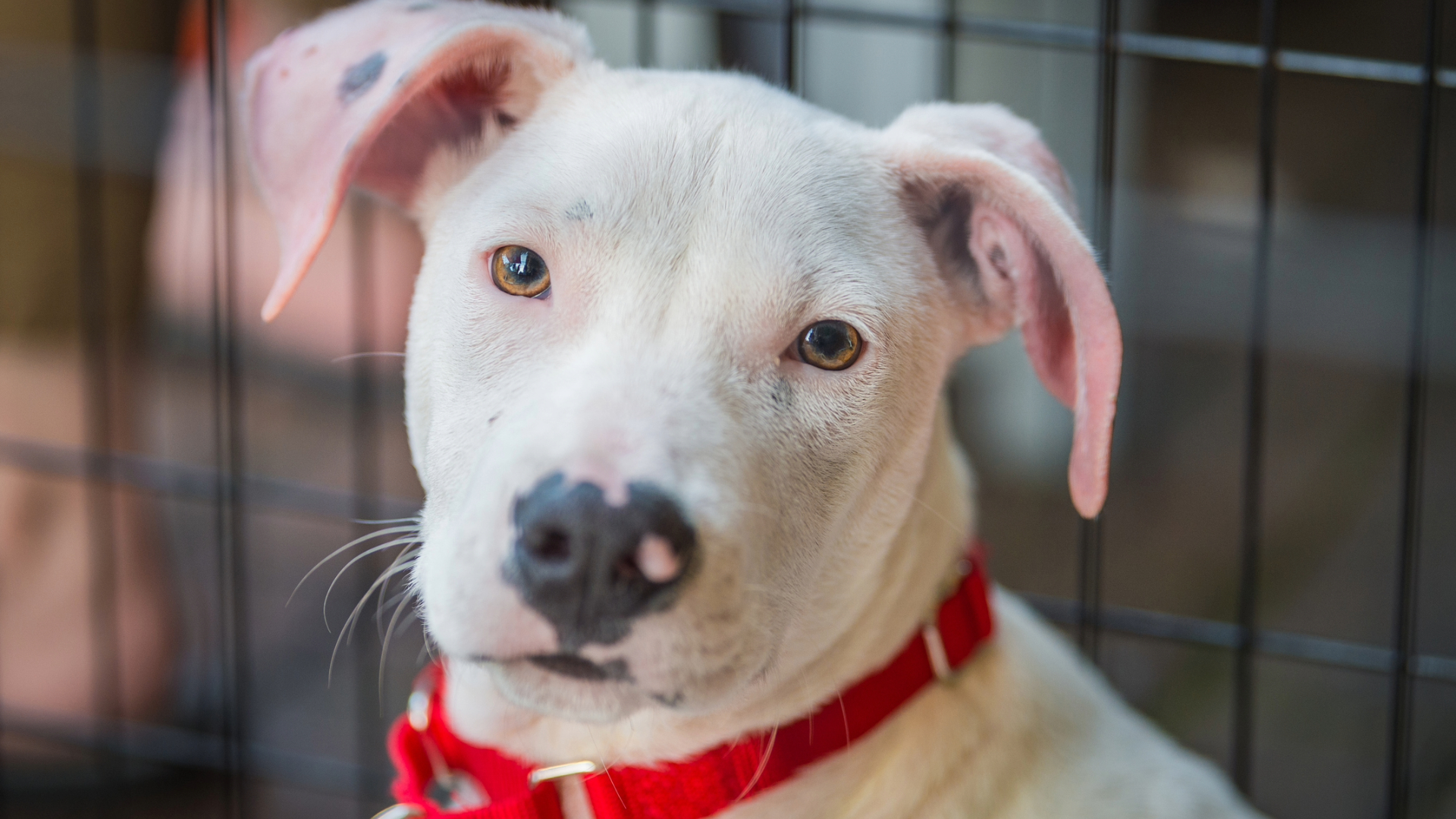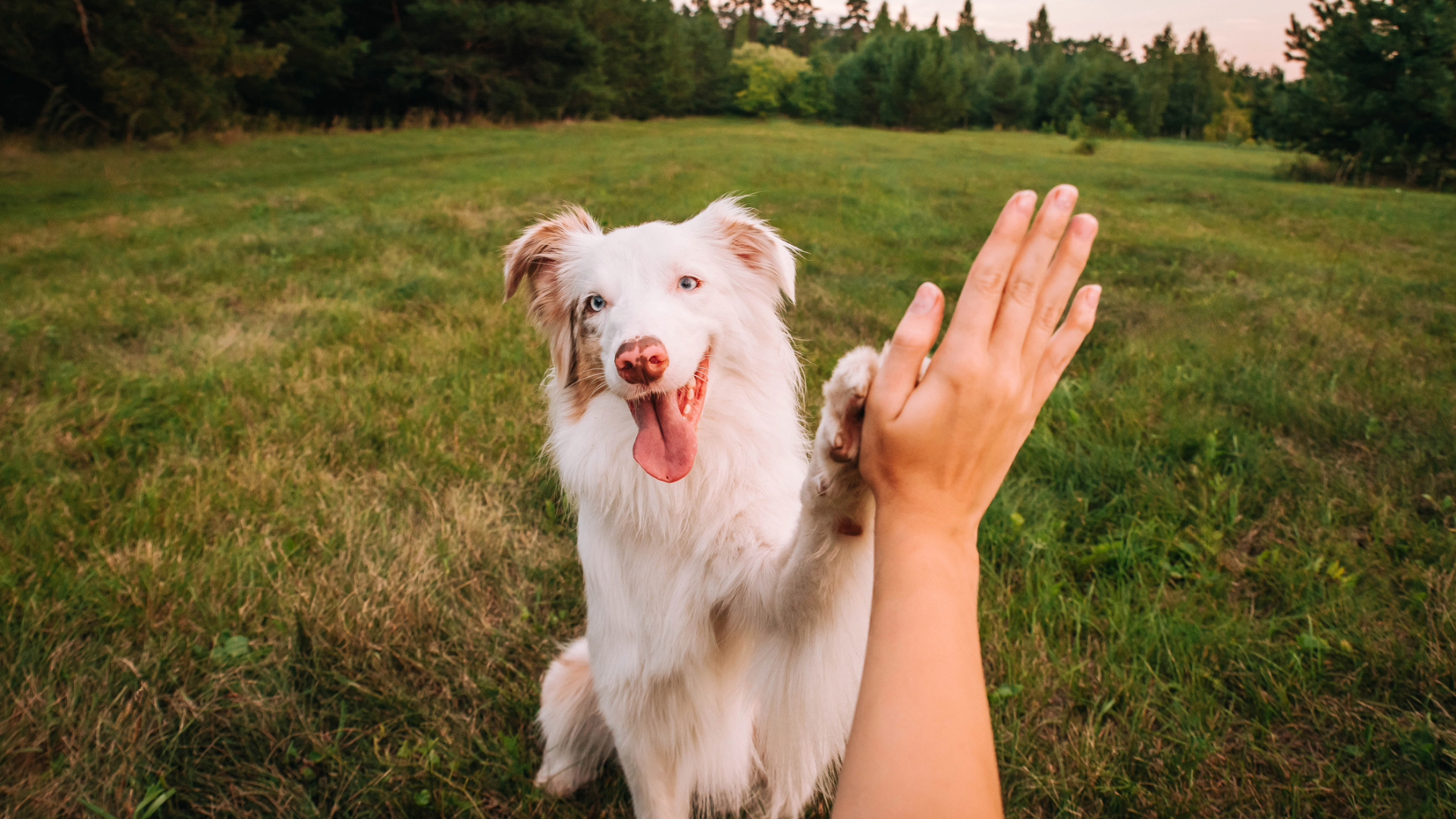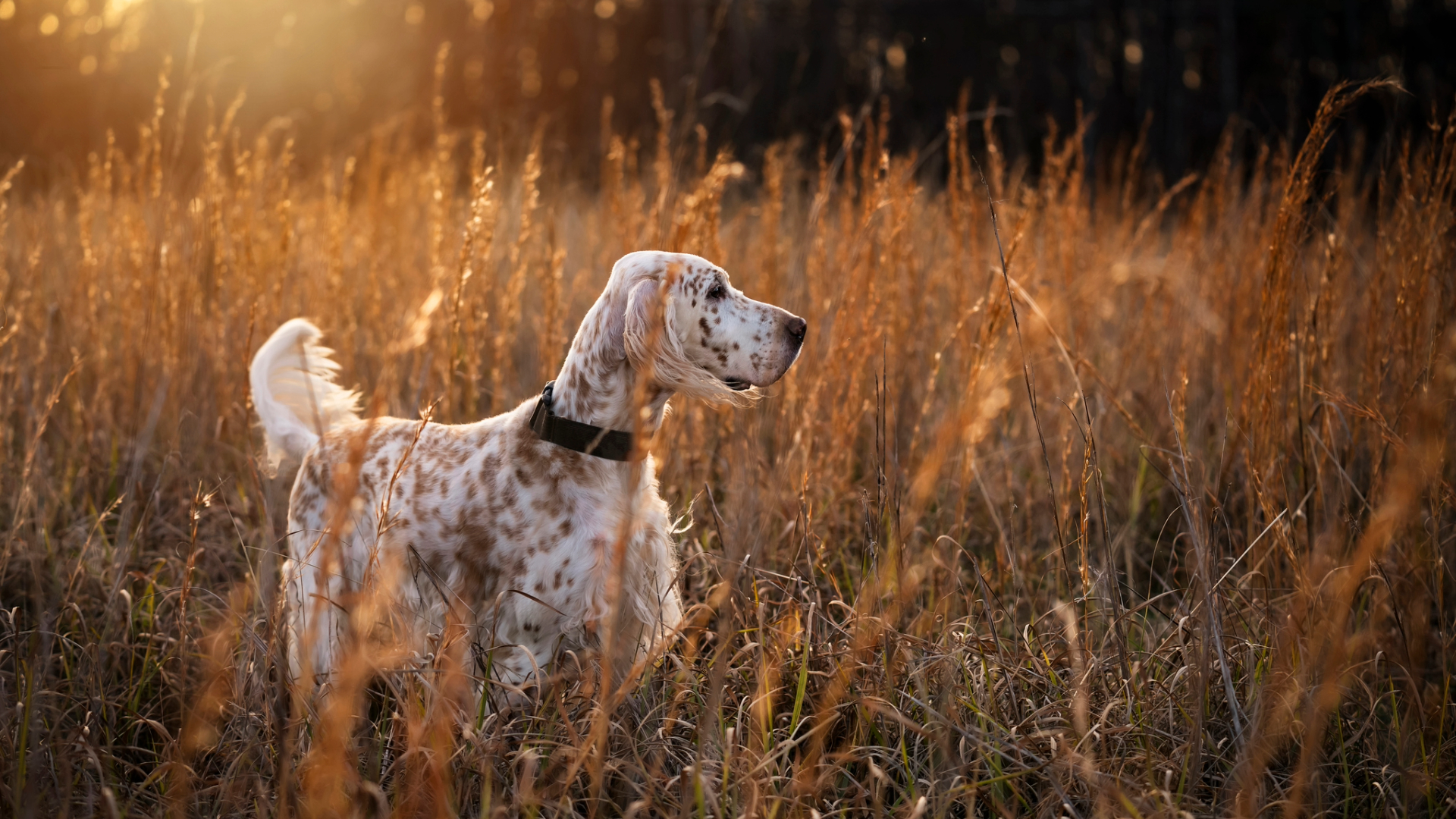Deafness in dogs: Signs, causes and how to support them
Learn about the causes and signs of deafness in dogs, and what you can do to help

Deafness in dogs can be distressing for both you and your furry friend, but with the right support, deaf dogs can go on to live happy, fulfilling lives. Whether your dog was born deaf or lost their hearing later in life, understanding the condition is the first step towards managing it confidently and compassionately.
As a vet with over a decade of experience in small animal practice, I’ve worked with countless dogs coping with hearing loss. I’ve seen first-hand how deafness affects not just their day-to-day lives, but also their relationships with their owners.
The good news is that dogs are incredibly adaptable creatures. With some thoughtful adjustments and plenty of patience, they can thrive even without their hearing.
In this article, we’ll explore what deafness in dogs actually means, how to recognize the signs, what causes it, and – crucially – what you can do to help if your dog is affected. Whether you’re worried about your own dog’s hearing or just curious to learn more, read on for a vet’s guide to navigating life with a deaf dog.
What is deafness in dogs?
Deafness in dogs refers to a partial or complete loss of hearing. It can affect one ear (unilateral) or both ears (bilateral), and it may be present from birth (congenital) or develop later in life (acquired). Some dogs may be completely deaf, while others have a reduced ability to hear certain pitches or volumes.
Hearing in dogs works much like it does in people. Sound waves travel into the ear canal, vibrate the eardrum, and are converted into electrical signals that travel via the auditory nerve to the brain. Any disruption along this pathway, whether due to physical damage, nerve problems, or changes in the brain, can lead to hearing loss.
Deafness isn’t always easy to spot, especially if it develops gradually or only affects one ear. That’s why it’s important for owners to be aware of the potential signs and seek veterinary advice if they suspect a problem.
Get the best advice, tips and top tech for your beloved Pets

What are the signs of deafness in dogs?
Some signs of deafness in dogs can be subtle, particularly early on or if hearing loss is partial. Here are some common clues that your dog may be struggling to hear:
- Not responding to their name or verbal commands: A previously obedient dog suddenly ignoring you might be more than just stubbornness; it could be hearing loss.
- Sleeping through loud noises: Dogs with normal hearing are easily roused by sounds like doorbells or vacuum cleaners. A deaf dog may remain fast asleep.
- Startling easily when touched: If your dog doesn’t hear you approaching, they may jump when you touch them unexpectedly.
- Unusual barking: Some deaf dogs bark excessively, while others may start to vocalize in a different tone or volume.
- Tilting the head or showing signs of disorientation: If only one ear is affected, your dog might tilt their head or struggle with balance.
- Failure to respond to squeaky toys or environmental sounds: If your dog no longer shows interest in toys that previously excited them, it could be a red flag.

How do dogs become deaf?
There are a number of reasons a dog might lose their hearing, and these can be broadly divided into congenital (present from birth) and acquired (developing later in life) causes.
Congenital deafness is often genetic and commonly associated with coat color. It’s more prevalent in dogs with white or merle coats due to a lack of pigment-producing cells in the inner ear, which are essential for hearing.
Acquired deafness can result from:
- Chronic ear infections: Ongoing inflammation or untreated infections can damage the structures of the ear.
- Trauma or injury: Head trauma or loud noise exposure (like fireworks or gunshots) can lead to permanent damage.
- Age-related changes (presbycusis): Just like in people, dogs often lose some hearing as they get older. Read up on ways to take care of senior dogs to make sure you are supporting dogs as they age as much as possible.
- Ototoxic drugs: Some medications, including certain antibiotics or diuretics, can damage the ear.
- Tumors: Growths in or near the ear canal or brain can interfere with the hearing pathway.
- Wax build-up or foreign bodies: While usually temporary, blockages in the ear canal can also impair hearing. Cleaning your dog’s ears regularly can help combat the build-up of wax.

What can you do if your dog goes deaf?
If you think your dog has gone deaf, don’t panic. Dogs are incredibly resilient, and there are lots of things you can do to support them:
- Get a proper diagnosis: Visit your vet for a thorough examination. They may recommend tests such as a BAER (Brainstem Auditory Evoked Response) test to assess your dog’s hearing.
- Adjust your training methods: Use hand signals, body language, and visual cues instead of voice commands. Dogs are very good at reading our gestures once they learn what they mean.
- Use vibration or light for communication: A gentle stomp on the floor can create a vibration that gets your dog’s attention. You can also try flashing a torch to call them from a distance. Always be careful not to shine in directly in their eyes.
- Keep them safe: Deaf dogs are at greater risk of accidents as they can’t hear dangers like cars. Always walk them on a leash and make sure your garden is secure.
- Avoid startling them: Approach your dog gently from the front and wake them with a soft touch or vibration so they don’t get frightened.
- Use scent and touch: Incorporating smells and physical contact into training and bonding can help strengthen your communication.
- Consider professional support: Working with a trainer experienced in deaf dogs can make a world of difference.
- Wear a special ID tag: Include a note that your dog is deaf, along with your contact details, in case they get lost (like this one from Amazon).

Can deafness in dogs be cured?
The answer depends on the underlying cause. If deafness is due to a temporary issue, like wax build-up or an infection, it can often be reversed with appropriate treatment.
However, if the hearing loss is due to congenital factors, nerve damage, or age-related degeneration, it’s usually permanent. Unfortunately, there’s currently no reliable surgical or medical cure for most types of permanent deafness in dogs.
That said, deaf dogs can lead full and joyful lives. With some simple adjustments, most adapt incredibly well and can still enjoy walks, playtime, and affection just like any other dog.
What dog breeds are prone to deafness?
Certain breeds have a higher risk of congenital deafness, particularly those with a piebald or merle coat pattern. These include:
- Dalmatians (one of the most commonly affected breeds – up to 30% may be born with some level of deafness).
- English Setters
- Australian Cattle dogs (Blue Heelers)
- Border Collies
- Bull Terriers
- Jack Russell Terriers
- Cocker Spaniels
- Great Danes
- Boston Terriers
It is important to remember, that just because a breed is predisposed doesn’t mean every individual dog will be affected. Breeders should carry out hearing tests in susceptible breeds to reduce the risk of passing on deafness genetically.

Deafness in dogs can be worrying for any pet owner, but it doesn’t have to define your dog’s quality of life. With the right support, patience, and a few adjustments at home, deaf dogs can continue to live full, happy, and enriching lives.
If you ever suspect your dog is losing their hearing, don’t hesitate to speak to your vet – early recognition and a tailored care plan can make a world of difference.
Read next: Aging in dogs

Emma Chandley is a vet with 14 years of experience and has a keen interest in surgery. After graduating from the Royal Vet College in London in 2011, she achieved a postgraduate certificate in small animal surgery from the British Small Animal Veterinary Association and Nottingham Trent University. She was then awarded advanced practitioner status in the same discipline by The Royal College of Veterinary Surgeons. She has a black Labrador and two pygmy goats at home.
Edited by Megan Milstead.
This page was last updated in May 2025 by Emma Chandley.
Emma Chandley is a vet with 14 years of experience and has a keen interest in surgery. After graduating from the Royal Vet College in London in 2011, she achieved a postgraduate certificate in small animal surgery from the British Small Animal Veterinary Association and Nottingham Trent University. She was then awarded advanced practitioner status in the same discipline by The Royal College of Veterinary Surgeons. She has a black Labrador and two pygmy goats at home.
